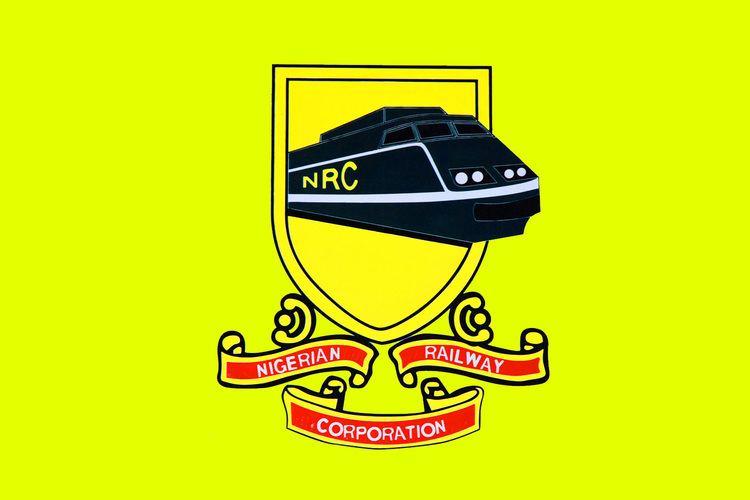Founded 1898 | ||
 | ||
News 10 fg to concession nigerian railway corporation 17 02 17 pt 2
Nigerian Railway Corporation (commonly abbreviated as NRC) is the state-owned enterprise with exclusive rights to operate railways in Nigeria.
Contents
- News 10 fg to concession nigerian railway corporation 17 02 17 pt 2
- History and legislative background
- Infrastructure and operations
- History
- Status in 2008
- Specifications
- References
History and legislative background
The Nigerian Railway Corporation traces its history to the year 1898, when the first railroad in Nigeria was constructed by the British colonial government. On October 3, 1912 the Lagos Government Railway and the Baro-Kano Railway were amalgamated, starting nationwide rail service under the name Government Department of Railways. With the passing of the Nigerian Railway Corporation Act of 1955, the company gained its current name as well as the exclusive legal right to construct and operate rail service in Nigeria. The rail network reached its maximum extent shortly after Nigerian independence, in 1964. Shortly after that, the NRC entered a long period of decline, inept management, and eventually a complete lack of maintenance of rail and locomotive assets. In 1988, NRC declared bankruptcy, and all rail traffic stopped for six months. After that, trains resumed, where the tracks were usable. By 2002, passenger service was again discontinued altogether. Starting in 2006, plans were made to restore the rail lines and add new locomotives with foreign assistance. In December 2012 regular, scheduled passenger service was restored on the Lagos to Kano line.
Infrastructure and operations
Nigerian Railway Corporation operates a network of 3,505 kilometers (2,178 mi) of single track lines, all have 1,067 mm (3 ft 6 in) gauge. The network comprises the following lines:
There are a few extensions of the 1,067 mm (3 ft 6 in) gauge network planned, but none of these have ever materialized since 1980, from Gusau on the branch to Kaura Namoda to Sokoto, 215 kilometers (134 mi), from Kano to Katsina, 175 kilometers (109 mi), and from Lagos to Asaba.
In the centre of the country a 1,435 mm (4 ft 8 1⁄2 in) gauge (standard gauge) network is very slowly progressing, its main line extends over 217 kilometers (135 mi) from Oturkpo to the Ajaokuta steelwork. A further 51.2 kilometers (31.8 mi) line of standard gauge is operational between the Itakp mines and the Ajaokuta steelworks. There are plans to add more standard gauge lines to these ones: Ajaokuta to Abuja and Ajaokuta to the Port of Warri, together 500 kilometers (310 mi) and from Port Harcourt to Makurdi over a distance of 463 kilometers (288 mi).
In the past the 2 ft 6 in (762 mm) gauge Bauchi Light Railway operated between Zaria and Jos over a distance of 184 kilometers (114 mi), this line was partially converted to 3 ft 6 in (1,067 mm) in 1927 while the remainder closed in 1957.
All these trains offer relatively new rolling stock consisting of Couchette-type sleepers, air-conditioned first class sitting coaches and non-air conditioned economy class coaches. Trains to/from Lagos also offer buffet cars. Between Lagos and Ifaw, a distance of 48 kilometers (30 mi), a local service operates on working days on behalf of the city of Lagos.
All trains are diesel locomotive operated. The railways owns theoretically nearly 200 locomotives, of which up to 75% are not operational, there are also about 54 shunters, 480 passenger coaches and over 4900 freight wagons, less than 50% of the coaches and wagons are in serviceable conditions.
At all 576 kilometers (358 mi) of main lines are controlled by panel interlocking and tokenless block. Rail tracks are mainly of the 29.8 kg/m (60 lb/yd), 34.7 kg/m (70 lb/yd) and 39.7 kg/m (80 lb/yd) types fixed by Pandrol K Type fastenings on steel sleepers (cross ties).
No trains have run on the Gusau branch since a bridge collapsed in Tsafe in 2002.
In February 2011, it was announced that construction was about to start on the Abuja - Kaduna railway. On 26th July 2016 the BBC reported that President Muhammadu Buhari had formally opened the 186km (150 mile) line linking the capital Abuja with the northern city of Kaduna. Although the project was completed in December 2014, the coaches had been delivered 15 months later. The line had been upgraded by a Chinese state company at a cost of about $850m (£647m) as part of a wider project to modernise Nigeria's decrepit rail network. Trains will carry passengers and cargo at speeds of up to 150km/h and the journey will take two hours.
History
NRC went more than once into bankruptcy during the last 20 years. Lack of maintenance on infrastructure and rolling stock and a high number of employees the railway produced huge deficits, not taken over by the state. In 2005 after several re-organisations of the system passenger transport was reduced to four departures weekly from Lagos of which two went to Kano, one to Jos and one to Maiduguri; from Port Harcourt four trains every week ran to Kano (two weekly), one weekly to Jos and one to Maiduguri.
News from Nigeria indicates that the current (2006) government wants to rebuild more or less the entire existing 1,067 mm (3 ft 6 in) network to standard gauge.
Status in 2008
According to the critique by Mazi Jetson Nwakwo, acting managing director of the NRC the rail system is suffering from the lack of political will by the nation's politicians. While the NRC had employed about 45,000 people between 1954 and 1975, current employment is only 6,516. He pointed out that no new wagons had been bought since 1993, and some wagons date back to 1948. Track condition limit trains to a speed of 35 km/h.
